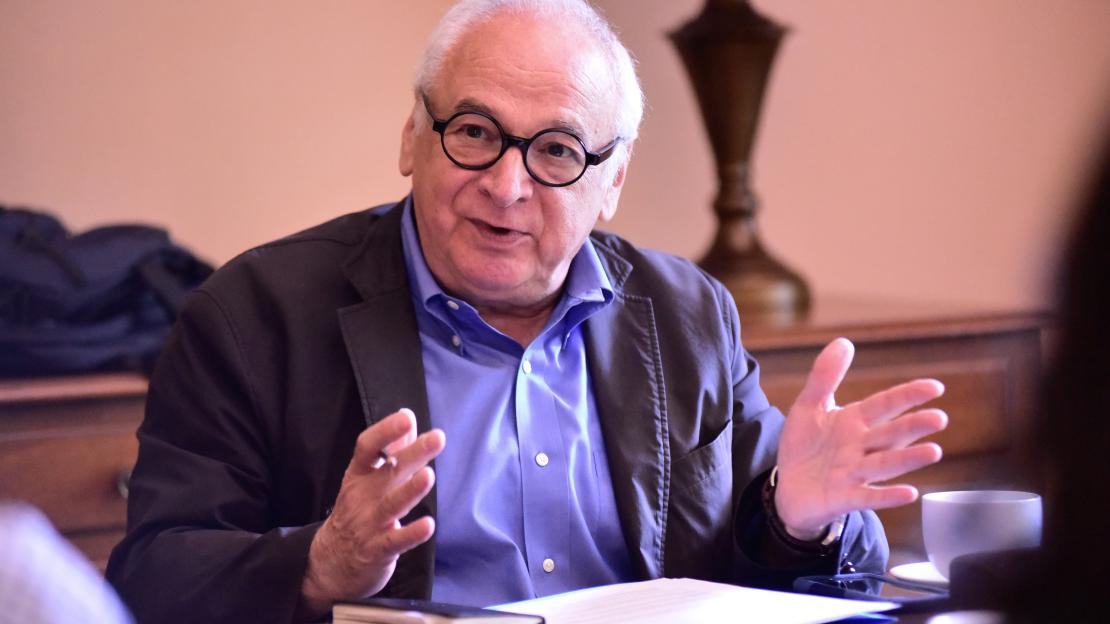Jeffrey Dvorkin began every first-year journalism course at U of T Scarborough with the same question: “What do you consider to be a reliable source of information?”
Consistently, students could only tell him what made information unreliable. They also appeared overwhelmed by the volume of content they faced every day.
“I discovered that in the expectations of what journalism is and is supposed to be, we're all over the place,” says Dvorkin, former program director of the journalism program and current senior fellow at U of T’s Massey College.
He decided to create a practical resource to give students, and all who consume information, the skills to answer his question. Dvorkin’s new book, Trusting the News in a Digital Age, is already a required text in five universities across the U.S. and Europe.
“When your Uncle Fred sends you something on Facebook and it's just nonsense, how do we help Uncle Fred?” he says. “If we help Uncle Fred, we help ourselves.”
Seek two independent sources
Critical thinking skills are key in a post-pandemic digital age, Dvorkin says, as is the patience and persistence to question where information comes from. This means asking tough questions and keeping close the journalistic mantra, “How do we know?”
In a world where science may appear less concrete than ever, Dvorkin says it’s important to remember journalists are always at the point of, “Here’s what we know so far.” Journalists and content creators also need to question their own experts, cross-reference evidence and provide a robust picture of what is currently known.
He says readers should look for this triangulation of evidence and seek content that cites at least two independent sources. Three sources are terrific, one is not enough and all must be independent of one another. If, for example, a blog cites only its own posts as evidence or other unreliable sources, this should bring pause.
Resist easy solutions
With rapidly changing public health measures communicated largely online, a digital detox is not as viable as it once was. Still, Dvorkin says taking regular breaks from the internet can help stomach the tsunami. Dvorkin himself tries not to go online for one day a week, something he finds difficult but ultimately healthy.
“There is an addictive quality to the internet, and we are happily hooked on this endorphin rush. We validate ourselves when we connect with an idea or a person on the internet. And that's good, but it also has a downside.”
Digital culture promised to connect the world, but its volume can cause some to retreat into smaller circles of interaction. Dvorkin says this can create a breeding ground for confirmation bias, the tendency to seek information that reaffirms existing beliefs.
“We need to take that extra step to make sure that we are seeing the world as it is, not as we wish it to be. And that, to me, is the essential thing, to make sure we are not seduced by the easy and perhaps too obvious solution.”
These echo chambers may be sustained when online choices inform powerful, intrusive algorithms. Dvorkin says this is a crucial time to “figure out how the internet manipulates us.”
Find the good, bad and ugly
Dvorkin would routinely ask his students if they had a Gmail account. He’d remind them that Google tracks what they’ve been buying, searching and clicking, then sells that data to commercial enterprises. When creating an email account is to sacrifice one’s privacy, it means the user is the product, he says.
Dvorkin recalls a thesis he wrote on the French Revolution in the Second World War, and how the resistance worked to create a community among like-minded people while fighting the occupation of France.
“I think that's a valid metaphor for us today. We need to think of ourselves as being members of the digital resistance, taking advantage of what we can and protecting against what we don't need or want or like.”
He adds our focus should be on identifying the best aspects of digital culture, and ensuring it exists to serve the public as citizens first, not consumers.
“This is a really interesting moment in time for how we need the digital environment, how it needs us and what we can do to move it in a better way, both with it and without it.”
